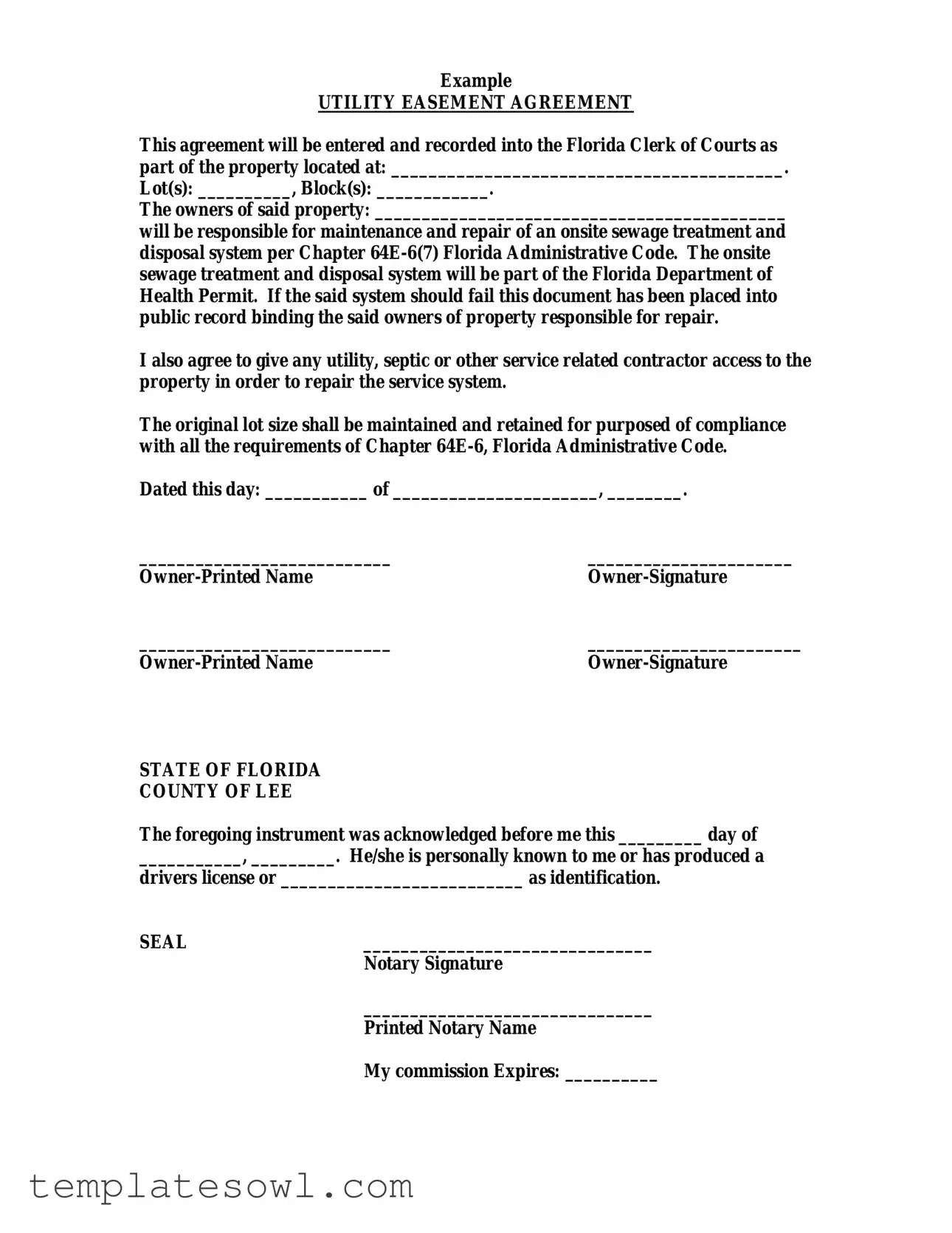Example
UTILITY EASEMENT AGREEMENT
This agreement will be entered and recorded into the Florida Clerk of Courts as part of the property located at: __________________________________________.
Lot(s): __________, Block(s): ____________.
The owners of said property: ____________________________________________
will be responsible for maintenance and repair of an onsite sewage treatment and disposal system per Chapter 64E-6(7) Florida Administrative Code. The onsite sewage treatment and disposal system will be part of the Florida Department of Health Permit. If the said system should fail this document has been placed into public record binding the said owners of property responsible for repair.
I also agree to give any utility, septic or other service related contractor access to the property in order to repair the service system.
The original lot size shall be maintained and retained for purposed of compliance with all the requirements of Chapter 64E-6, Florida Administrative Code.
Dated this day: ___________ of ______________________, ________.
___________________________ |
______________________ |
Owner-Printed Name |
Owner-Signature |
___________________________ |
_______________________ |
Owner-Printed Name |
Owner-Signature |
STATE OF FLORIDA
COUNTY OF LEE
The foregoing instrument was acknowledged before me this _________ day of
___________, _________. He/she is personally known to me or has produced a
drivers license or __________________________ as identification.
SEAL |
_______________________________ |
|
Notary Signature |
|
_______________________________ |
|
Printed Notary Name |
|
My commission Expires: __________ |
